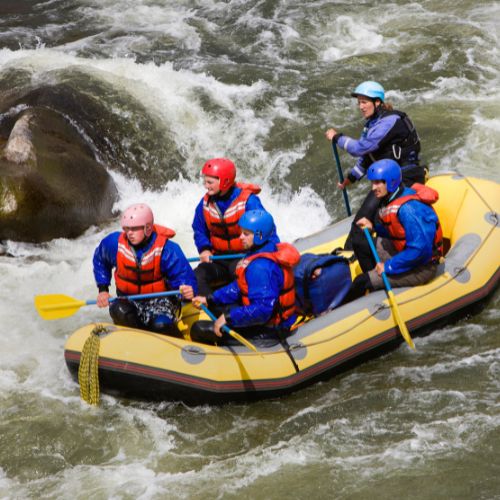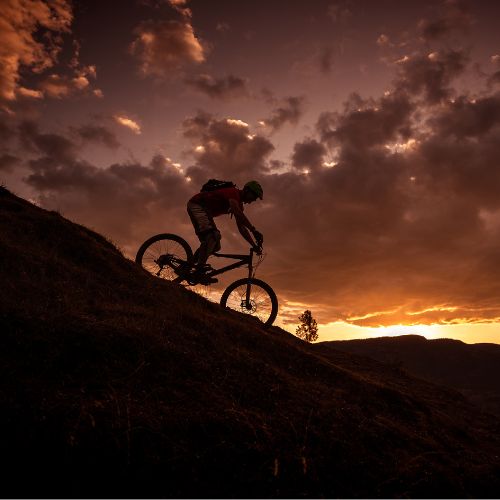The Inca Jungle Trek is an alternative and adventure-filled route to reach Machu Picchu. Unlike the classic Inca Trail, this experience combines mountain biking, hiking, ziplining, optional rafting, and hot springs, all in a four-day journey. On the first day, travelers descend by bike from Abra Málaga and can go rafting if they wish. The second day includes a hike through the tropical jungle, crossing fruit and coffee plantations. The third day continues with a hike to Aguas Calientes, with the option to visit hot springs. Finally, the fourth day is dedicated to a guided visit to Machu Picchu.
This experience is ideal for those seeking adrenaline, varied landscapes, and direct contact with nature and local culture. In addition, it does not require special permits and is usually more affordable than the traditional Inca Trail, making it an excellent option for young and adventurous travelers.
To do the Inca Jungle Trek, it’s important to bring the essentials to enjoy the journey comfortably and safely. It is recommended to bring a small backpack of 20 to 30 liters and a waterproof cover, as rain is common in the area. Regarding clothing, it’s ideal to bring lightweight and quick-drying clothes, a waterproof jacket, trekking pants, breathable t-shirts, warm clothes for the nights, swimwear for the hot springs, comfortable socks, a cap or hat, sunglasses, and a neck gaiter or buff.
The footwear should be suitable for hiking, preferably trekking shoes or boots with good grip. It is also useful to bring sandals or light shoes to rest at night. Finally, don’t forget to bring cash, your ID or passport, a camera or phone with an external battery, and a flashlight or headlamp for the nights.
The Inca Jungle Trek has a cost that varies depending on the duration of the tour, the type of service (group or private), and the services included. For a full 4-day tour, the price usually starts at $240 per person for basic packages that include transport, meals, guide, and entrance to Machu Picchu. However, the most common average ranges from $300 to $450 per person, especially during the high season.
If a more personalized or private service is desired, the price can go up to $550 or even $650, depending on the agency and whether additional activities such as ziplining, rafting, or entry to Huayna Picchu are included. For shorter options, such as 2- or 3-day tours, prices range from $230 to $350.
If you’re unsure about the best season to go, you have two options: if you’re looking for stable weather and safety in activities, the ideal time is between May and September. If you prefer to avoid crowds and don’t mind some rain, April or October are good alternatives.
Choosing the Inka Jungle Trek is an excellent option for those looking to reach Machu Picchu in a different way, combining adventure, nature, and culture. Unlike the classic Inca Trail, this route offers a more dynamic experience by including activities such as mountain biking, jungle hikes, ziplining, rafting, and hot springs. It is ideal for young, adventurous, and adrenaline-loving travelers.
It also does not require special permits, is more affordable than other traditional routes, and allows you to discover varied landscapes, from the Andes to the high jungle. It also provides the opportunity to interact with local communities and closely experience Peru’s biodiversity. The Inka Jungle Trek is not just a hike, but a complete adventure.

| Option | Days | Activities | Approx. Price (USD) |
|---|---|---|---|
| Full | 4 | Biking, rafting, canopy, trekking, domes, hotel, guide, train/bus | 240–600 |
| Intermediate | 3 | Biking, rafting, canopy, trekking, hotel, guide, train/bus | 320–400 |
| Express | 2 | Biking, rafting, trekking, quick visit to Machu Picchu | variable budget |
The best season to do the Inca Jungle Trek is during the dry season, which runs from April to October.
Dry Season (April – October)
Rainy Season (November – March)
To fully enjoy the Inca Jungle Trek, it’s important to pack smart and light. It’s recommended to bring a small backpack and a waterproof cover to protect your belongings from the rain. As for clothing, it’s essential to have lightweight, breathable, and quick-drying garments, as well as a waterproof jacket, comfortable pants for walking, t-shirts, warm clothes for cold nights, and swimwear for the hot springs. Don’t forget to bring a hat or cap, sunglasses, a buff or neck gaiter, and several pairs of socks.
For footwear, trekking shoes with good grip are essential, along with sandals or light shoes for resting at night. For personal hygiene, bring toilet paper, wet wipes, sunscreen, insect repellent, toothbrush, hand sanitizer, and a basic first aid kit.
It’s also recommended to pack energy snacks such as nuts or bars, a reusable water bottle, and, if possible, purification tablets. Don’t forget your ID or passport, cash (for purchases, snacks, or extra tickets), a flashlight or headlamp, and a power bank for your phone or camera.
The Inca Jungle Trek begins in Cusco. From there, travelers are transported by bus to Abra Málaga, a mountain pass at over 4,300 meters above sea level. That’s where the adventure begins.
Throughout the journey, you descend by bike into the high jungle, passing through towns like Santa María and Santa Teresa, then hike or take a train from the Hydroelectric area to the town of Aguas Calientes, the closest point to Machu Picchu. Finally, on the last day, you ascend to Machu Picchu, the famous Inca citadel.



